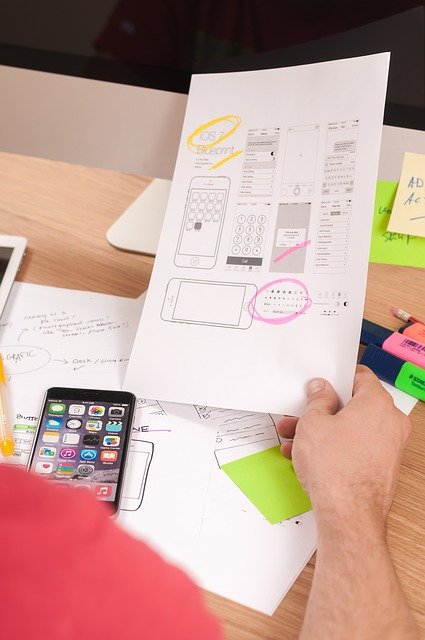In tech circles, Apple is considered more than a tech brand. It is an institution on its own that perfectly balances mass appeal and out-of-the-box thinking. Though things have changed under the leadership of Tim Cook, the core philosophy set by the late Steve Jobs remains the same. A company which is closely watched by Wall Street and consumers alike, Apple has had a successful year despite facing challenges from external forces, including the pandemic and increased pressure from regulators. While the world has already started speculating what products to expect from the Cupertino giant next year and beyond, we observed certain things this year that not only tell us about Apple’s product strategies, but also give a peek into the company’s vision of the future.
Lately, Apple has started launching more ‘mini’ products. (Image credit: Anuj Bhatia/Indian Express)
The world of mini devices
Someone within Apple deeply cares about the ‘mini’ products and wants the company to address a niche segment that still wants to use devices with small-form factors. The message that often gets misunderstood is that these products are made simply because a cash-rich company like Apple can take risks and does not care much about the commercial prospects. That’s not how Apple functions. Designing a product like the iPhone 13 mini is more complicated, because you know the tight space makes it hard to fit a larger battery and yet the priority is to deliver battery life that lasts all day long.
For instance, the new iPad mini may look like a miniature version of the iPad Air but the way the mini has been designed gives a precursor to a product that could end up being a foldable device in the near future. In their current form, both the iPhone 13 mini and iPad mini are usable devices but also highly experimental in nature. Beyond laying the groundwork for new form factors, devices like the iPhone 13 mini and iPad mini give Apple an edge over the competition as its rivals currently do not sell such devices.
Although Apple had offered ‘mini’ branded devices in the past as well, this time around the push is to have a family of products including the HomePod mini and Mac mini that serves a specific use case and users. The idea is to stay away from associating them as ‘affordable’ devices even if in some cases the product is an entry into the Apple ecosystem.
Apple CEO Tim Cook, left, and chief design officer Jonathan Ive take a look at the Mac Pro in the demo area at the Apple Worldwide Developers Conference in San Jose. Ive left Apple in 2019. (Image credit: AP)
A post-Jony Ive era
Ive leaving Apple was a big loss for the company, and it would be hard to replace the celebrated industrial designer who is behind several hit products including the iPhone and iPad that made Cupertino a household name. But the exit of Ive from Apple means the company is now more independent in thinking and can design products that are more practical in their approach. The new design philosophy is already visible in the latest MacBook Pro that fixing the issues the previous model suffered from.
For example, the new MacBook Pro includes an HDMI port which is exactly what photographers wanted on a professional-level notebook but Ive’s emphasis on form over function made it impossible to have that feature on the last-generation notebook. The new MacBook Pro is thicker and heavier, but has gained functionalities appreciated by the users. Several new products launched by Apple throughout the year, including the redesigned Siri remote for Apple TV and iPhone 13 shows that the form has taken a back seat and the priority is given to functionality.
It’s not a sign that Apple from now on will design a product based on what consumers wish to see. Apple still focuses on a product that people will buy. The difference is that the product designed in the post-Ive era will be more practical and functional but less flashy.
The rise of Beats by Dre
Until last year, there was speculation that Apple might end the Beats lineup and focus entirely on the Apple-branded audio line. Well, that didn’t happen. In fact, Beats as a brand has gotten a real push lately and Apple spared no expense in creating all necessary hype around Beats’ new products. If you look at Beats by Dre, the brand has taken the route of collaborations with hip-hop artistes and designers that truly merged the worlds of streetwear, fashion, and tech.
At the start of the decade, headphones were seen as fundamentally uncool. Beats, way before Apple acquired the brand, tried to weave in headphones as part of pop culture. Distinct in crowds, popular with celebrities – the aggressive street-inspired designs helped Beats products be different from the competition, especially from Apple AirPods. Hiroshi Fujiwara’s Fragment design collaboration with Beats brought back the missing mojo that the brand needed to thrive in the new world where luxury and streetwear are becoming one.
Throughout the year, Beats introduced several new earbuds that are priced less than Apple’s AirPods but offer a solid alternative. For example, the new Beats Fit Pro has a lot of special features including active noise cancellation (ANC) and even Android support for less than the price of the AirPods Pro. The re-emphasis on Beats feels the start of things yet to come.
The iPhone 13 series cost the same as the last generation lineup. (Image credit: Anuj Bhatia/Indian Express)
No price increase
Apple has, since its inception, built a reputation of charging a premium for its products. The brand loyalty translates to a higher price of products, backed by exceptionally well-designed devices and the lure of the Apple ecosystem. But during the pandemic, Apple did something that was least expected — no price increase. The iPhone 13 costs the same as last year’s model, while the iPhone 13 Pro Max also costs identical to last year’s offering. Cupertino has raised prices of its popular products over the years, with the iPhone being the headliner.
Experts say the pandemic prompted Apple not to increase its iPhone prices but a company of Apple’s stature can increase the price whenever it feels like doing so. Its competitors, meanwhile, launched premium smartphones at higher prices this year. That leaves us with the question of why did Apple not increase iPhone prices despite facing the chip shortage and supply chain issues. Is it because iPhone sales have sky high and Apple can take a hit to keep new users coming, or is Apple waiting for the next-generation iPhone and then only it will increase prices? Whatever the reason, prices of the iPhone, Apple Watch, and iPad (except for the new iPad mini)are mostly unchanged this year.
The program, known as Self Service Repair, will make spare parts for Apple products available to purchase starting early next year. (Image credit: Apple)
Opening up the walled garden
Although it is hard to say that cracks are appearing in Apple’s famous walled garden, Cupertino still controls how it wants to operate its tightly-controlled ecosystem on its own terms. Earlier this year, Apple announced its decision to open up FaceTime to non-Apple users for the first time. Now, Apple allows Android and Windows users to get invites to FaceTime calls. On the surface, it seems like a generous move signaling shifting of gears of sorts but there is one big caveat attached to the feature. These users, for example, still won’t be able to start FaceTime calls nor able to take advantage of FaceTime’s SharePlay feature. It’s a well-thought-out move that will only encourage non-Apple users to switch to an iPhone in the future.
Apple also said it would soon let users fix their iPhones and Macs by providing parts, tools and manuals. The move was justifiably hailed as a major victory for the “right to repair” movement. Apple made this U-turn for a number of reasons but by doing so it has become the poster child for the war against products that resisted repair, a smart PR move.
Source: https://indianexpress.com/article/technology/opinion-technology/5-changes-at-apple-in-2021-7667037/



